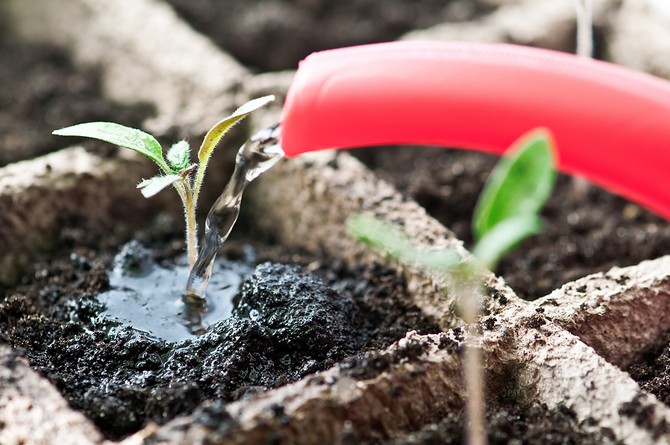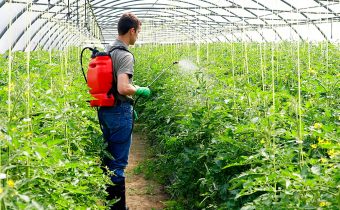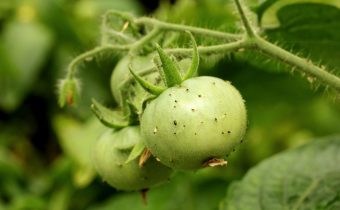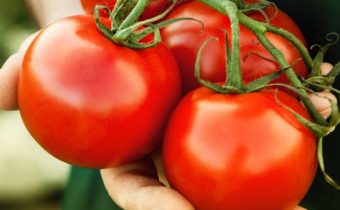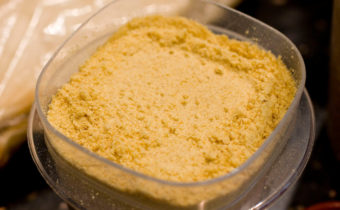How to be if tomato seedlings dry and turn yellow?
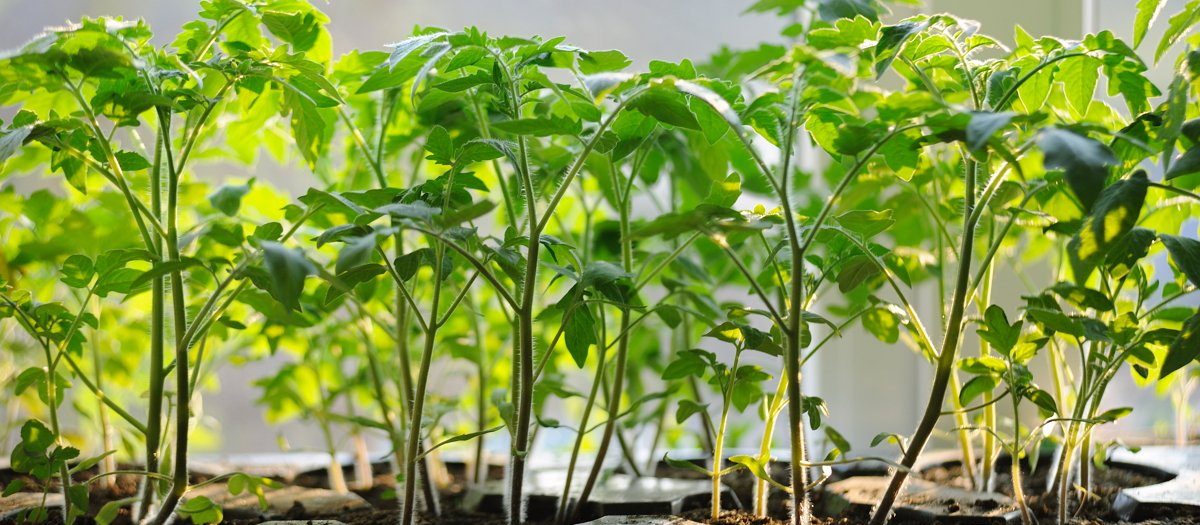
Why does healthy seedling suddenly begin to turn yellow, leaves fall, dry, curl? To assist saplings, establish the cause of this manifestation. Frequent watering, lack of light, lack of or excess fertilizer, disease - this is all the wrong care for seedlings. If the problem is resolved in a timely manner, there is a chance to save the seedlings.
Symptoms and effects
In March, gardeners window sills furnished with tomato seedlings. When the lower leaves begin to change color, do not ignore it.
The measures are taken if in the first month of the seedling’s life:
- the stem becomes milky;
- leaves wither, turn yellow, dry;
- the socket does not grow;
- growth stops.
For the first week, the young can stand slender when the yellow leaves appear. This calms in the hope of self-recovery, although seedlings can dry out at any time.
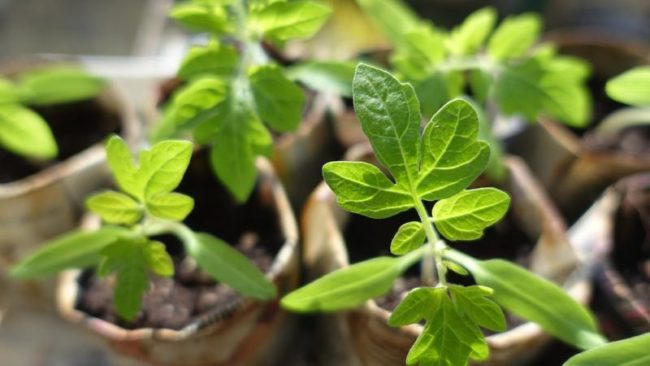
In this case, the plant grows slowly or stops growing altogether. Poor transfers in another container. Carrying out to fresh air turns into stress for seedlings. Leaves may burn out along with the stem.
How to feed tomato seedlings to be plump?
Growing tomatoes, summer resident for the season performs many different jobs. Here and weeding from weeds, and loosening, and watering, and ...
The reasons
Gradual yellowing of the foliage can be noticed on time and prevented. If there was a sudden change in color, it indicates the death of the rhizome. Top dressing does not always help and the seedling dies.
Negative factors:
- lack of space, dense landing;
- air temperature drops in the room;
- frequent watering, use of running water;
- excess fertilizer urea, superphosphate or nutritional deficiencies;
- the location of the container with the young on the window of the north side, where drafts, or on the sunny side, where the glass is very hot
- direct sunlight or lack of light;
- incorrect picking - damaged roots or entangled among themselves;
- dry air;
- salty, sour soil;
- low tight packaging;
- Fusarium disease, late blight, chlorosis.
Top dressings do together with waterings, dissolve nutrients in water.
Lighting
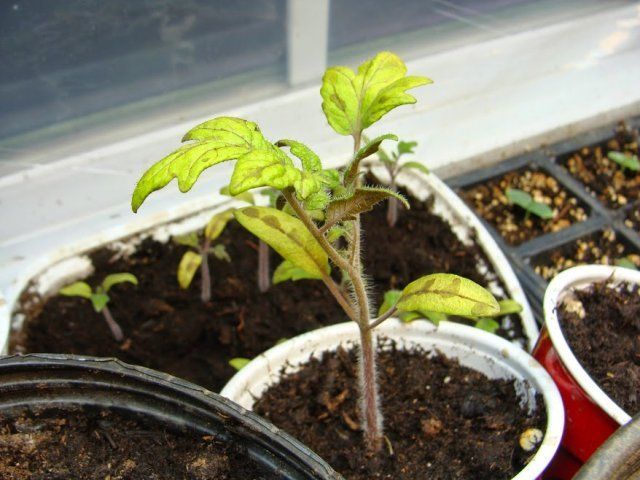
Too dense planting prevents seedlings from getting enough light. If there is a short day in the winter, then lamps are needed to extend the day to 16 hours.
Tomato - thermophilic culture. Seedlings should be located on the southern or southeastern windowsills with good lighting. Ensure that the sun does not burn the fragile seedlings.
The soil
If for planting seedlings took garden soil, then you can face a lot of problems. It is tough, sometimes acidic, salty, alkaline. There are many fungi, harmful insects. Fungal spores come to life with increasing temperature and high humidity.
Tomatoes do not like to grow on salty soil, they turn yellow. Acidic soil where pH> 8 significantly reduces the immune system of plants, they become vulnerable to disease. Many trace elements are not absorbed, in particular, iron, which is responsible for the formation of chlorophyll. Optimum habitat for tomatoes pH 6-6.5.
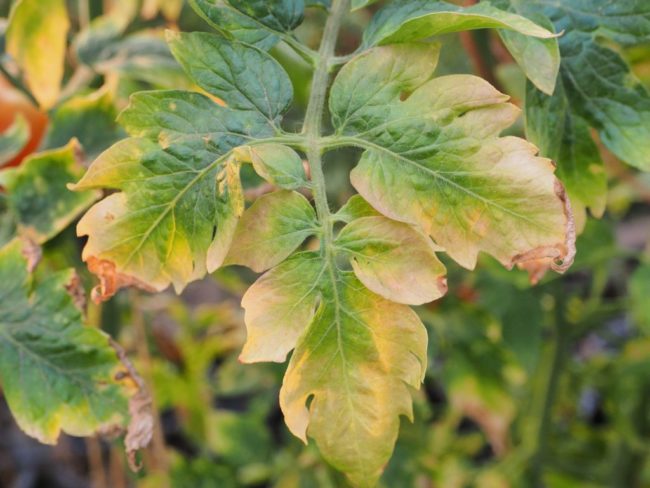
Dense in structure, the soil does not allow the roots to grow; mineral substances are poorly absorbed. Plant parts can become yellow if the ground is cold, too wet and infested with parasites.
Slaked lime, ash, chalk help reduce and normalize acidity. If the soil is saline, remove 3 cm layer and pour only with soft or rain water. Feeding for 3 weeks stop.
To neutralize the land, should be disinfected before planting seeds. Hold the seeds in a light manganese solution for 20 minutes, and pour the soil with potassium permanganate with water, you can calcine the soil mixture for half an hour in the oven or buy a ready-made earthen substrate in the store.
Leaves may turn yellow when transplanted due to stress. Over time, they adapt to the new environment and are restored.
Water
Water tomato seedlings with water at a temperature of 18-20 degrees. The frequency of watering no more than 2 times a week. It is necessary to consider the conditions in which the seedlings are located, whether it is hot or cold in the room, what is the humidity of the air. The number of waterings depends on it.
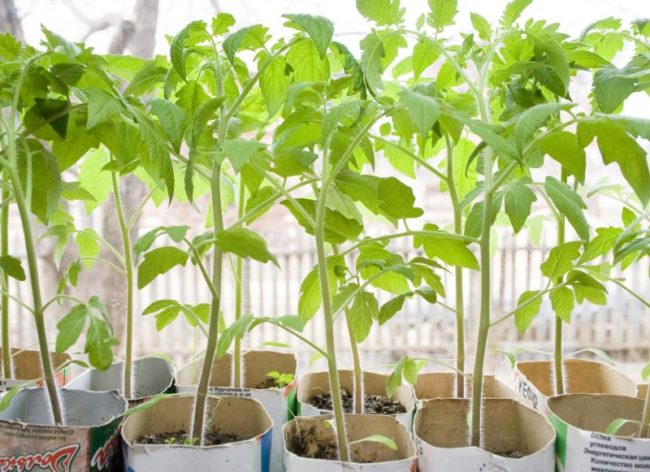
Mostly watered seedlings with water from the tap. It is not filtered and not defended, it contains bleach, which destroys plants. And this can also cause yellowing of the foliage. White spots on the soil surface indicate the hardness of the water. Watering is better with settled, filtered, soft water. This can be rainwater, snow melt or filtered water.
When the seedlings are covered with foil, the greenhouse effect occurs. To avoid this, it is necessary to spray the seedlings as needed.
Top dressing
Without nitrogen, the leaves grow dull, dry and fall off. New ones do not appear or grow smaller. Nitrogen fertilizers help in this situation.
Twisted leaves turned yellow and fell off - we need potassium nitrate. Yellow streaked honey - add magnesium or spray it with magnesium nitrate.
White color - a lack of iron, apply foliar nutrition. Brown spots - a shortage of zinc, zinc sulfate will help. If the leaf at the base turns yellow - pour manganese solution.
The first time seedlings are fertilized when two leaves appear with a solution of copper. Solution: on 2 l of water 1 spoon of copper. It also helps from phytophthora.
The second time fed with nitrogen in 8-9 days after the picks. On a bucket of water 1 spoon of urea.
For fertilizer use one proven drug to not burned greens. The next feeding is carried out only after 2 weeks, half the dose from the previous volume is used.
Diseases and pests
Untreated seeds, infected soil, contaminated tools, unwashed hands are the main causes of fungus. Diseases: phytophthora, black leg, fusarium ruin young and cause great damage to the future harvest.
Fusarium fungal disease causes yellowing and wilting of seedlings. To fight the infection, seedlings are treated with Fitosporin, repeat the procedure after 10-14 days.
Abundant watering cause disease - black leg. The roots turn black, thin, the seedling dies, the fungus is transferred to neighboring plants, if they are in the same container. In this case, stop watering, observe the temperature regime, remove infected specimens, disinfect the roots of the rest of the seedlings and transplant to new soil.
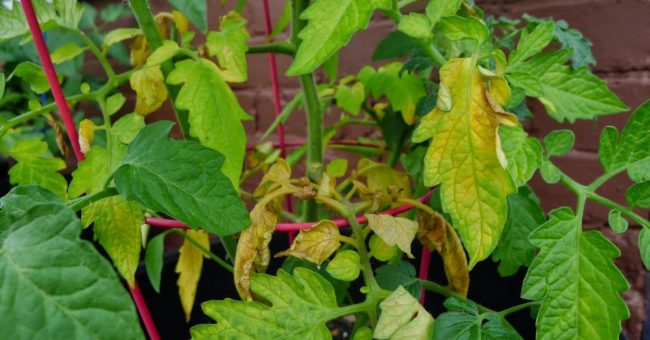
Low temperature and high humidity contributes to the development of phytophthora, it develops rapidly. There are brown spots on the foliage. To prevent infection, spray plants with a salt solution: for 5 liters of liquid, half a glass of salt is diluted and thoroughly stirred.
Chlorosis occurs when micronutrient deficiencies. It is important to observe the dosage of fertilizers and to make them in a timely manner.
Aphids or spider mites can live on young. Inspection of plants, will help to identify uninvited guests. Insect tomatoes are treated with insecticides. If the infection is not significant, it will help the soap solution: per liter of water 30 g host. soap.
Recommendations
The yellow and twisted leaves are cut together with the twigs, leaving only the growing up outlet. If the disease has affected all parts of the plant, it is completely removed.
The temperature in the room is not reduced below 18 degrees, the optimum temperature is 20-23 C *. Prevent all drafts, apply additional heaters if necessary.
It is better to choose hybrids resistant to diseases and climatic conditions. They will relieve gardeners from many problems.
Water the seedlings of tomatoes correctly so that it is strong and does not stretch.
To get healthy and chunky tomato seedlings, it is important to know the finer points of watering. Do beginner gardeners who ...
Planting is done sparingly, if the seedlings have risen a lot, then the landing should be thinned out and transplanted into other containers. After two weeks, the seedlings are transplanted into an individual container, where the seedlings have enough space.
Feed young animals no more than 1 time in 3 weeks. The land is treated additionally with ashes.
In order for saplings to develop successfully, they have given a bountiful harvest, it is necessary to create optimal conditions for their development. Provide them with the right care, pick out tomatoes in time, monitor humidity and light.


